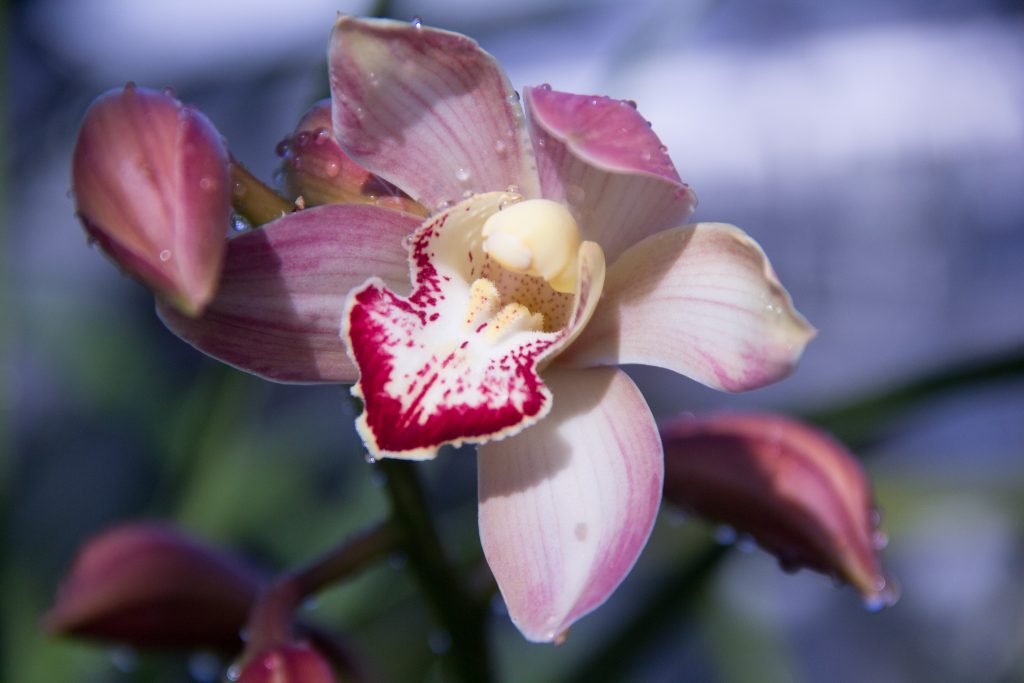For a building named “Life Sciences,” the dusty brick exterior and grey, poorly-lit interior doesn’t exactly scream life. Hidden within its dark and cold walls is the entrance to a quaint box of sunlight full of actual living things.
It seems counterintuitive at first: why would you need to go down to a basement to get to a greenhouse? As you descend into the basement, the lights dim, and your intuition tells you that you aren’t going to find a greenhouse by going further away from the sunlight.
You enter the greenhouse through a set of dingy swinging doors into a transitory space, where fresh plants are juxtaposed against an industrial background. In one corner there is a set of moist concrete steps. As you walk up the stairs, you slowly immerse yourself in the warm sunlight emanating from all directions.
Head up another set of steps and you’re immediately hit with this overwhelming smell that you can’t place. It’s a not a bad smell, but it’s so unique it’s confusing. You begin to explore the different scents; some are earthy and deep, others are light and fresh. Like a tree itself, the greenhouse has a main trunk that branches off into several bays. Some of these bays are overflowing with life, while other bays are more barren and dirt-filled.
As you continue to dissect the scent down that main branch, you’ll find a plant labeled Amorphophallus titanum, better known as the Corpse Plant. The Corpse Plant stays dormant for years, growing underground. Every seven to eight years it will grow a single leaf. Following the appearance of the leaf, the Corpse Plant will finally bloom, opening up a single flower that gives off the stench of rotting flesh. It’s a rather large plant, reaching up to 3 meters in height. Though the one in SBU’s Greenhouse isn’t nearly that big, it has grown a singular leaf, and Mike Axelrod is waiting in anticipation for his favorite plant to reach its full form.
Axelrod has been the head curator of SBU’s Greenhouse for well over 20 years.
Should you ever find yourself curious enough to explore the greenhouse, more likely than not you will find him happily bustling about, tending to plants or interacting with students who gravitate towards him.
There’s not much traffic coming in and out of the building, but the students that you do see have the gait of rushed ants. Of the handful of students that do make it down, or rather up and down, to the SBU Greenhouse, most of them are biology students, according to Stony Brook University’s website. You can see them trickle along the south side bays which houses the evolution of plants.
Students in the Sustainability Studies program like Environmental Humanities major Jessica Kaplan take this trek often. She summarized her experiences getting in touch with her green thumb by saying that “there’s so much to learn from growing your own vegetables or flowers and it’s such a rewarding experience.”
“It’s challenging, fun and tangible and it seems to be my niche in life because I do love it.” Axelrod beamed as he spoke about his role as head curator. “People don’t really know [about] us because we’re hidden behind the wall,” says Axelrod. “I would like all students to know that this is a facility that’s for them. They’re welcome as long as they have the plants as their main reason to come here.”
Marc Fasanella, a professor at the Sustainability Studies Program, holds a class called Agro-Ecology in the greenhouse. His first impression was that “it was kind of underutilized for a big research university,” which led him to creating classes that integrate its facilities. Fasanella says that the biggest challenge is its location, which makes it difficult to keep a constant eye on the progress of projects. “It’s hard to split the class time since it’s a 10-minute walk from where I teach” he said.
“Agriculture isn’t something you can create a formula for: the only way to learn how to garden is just to do it,” Fasanella said regarding his Agro-Ecology course. “I just pushed them off the diving board; here are some seeds, go get some dirt from outside—see what happens.”
As you take in the collage of foliage for one last time, you feel weirdly refreshed from being inside the greenhouse. As you emerge back into the open ground, the shift from green to gray is jarring to the senses.
Whether it is simply just looking at different plants, for educational purposes or for research, Axelrod encourages students to come and just “hangout” at the greenhouse. “It’s an opportunity that everyone is welcome to.”




Comments are closed.